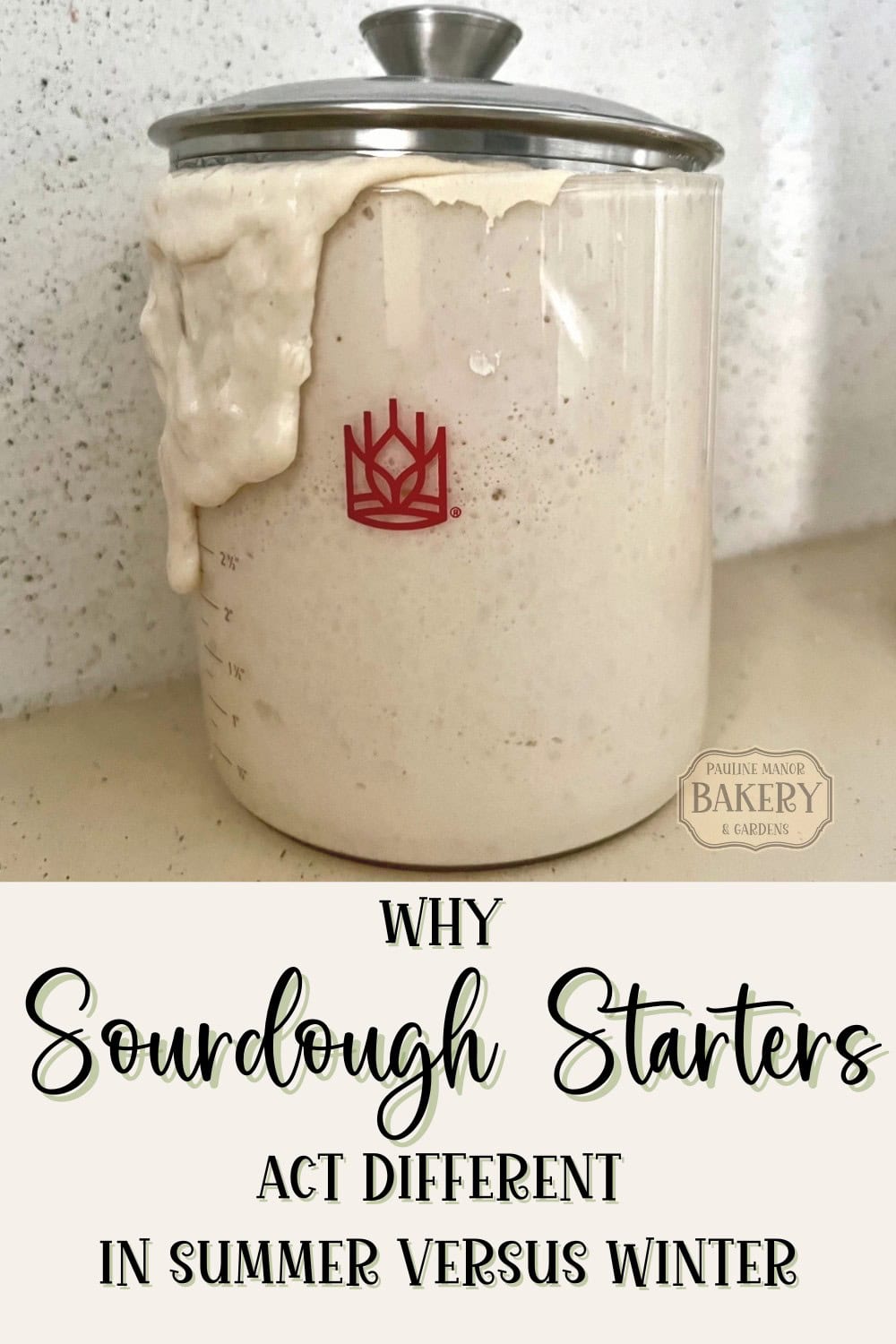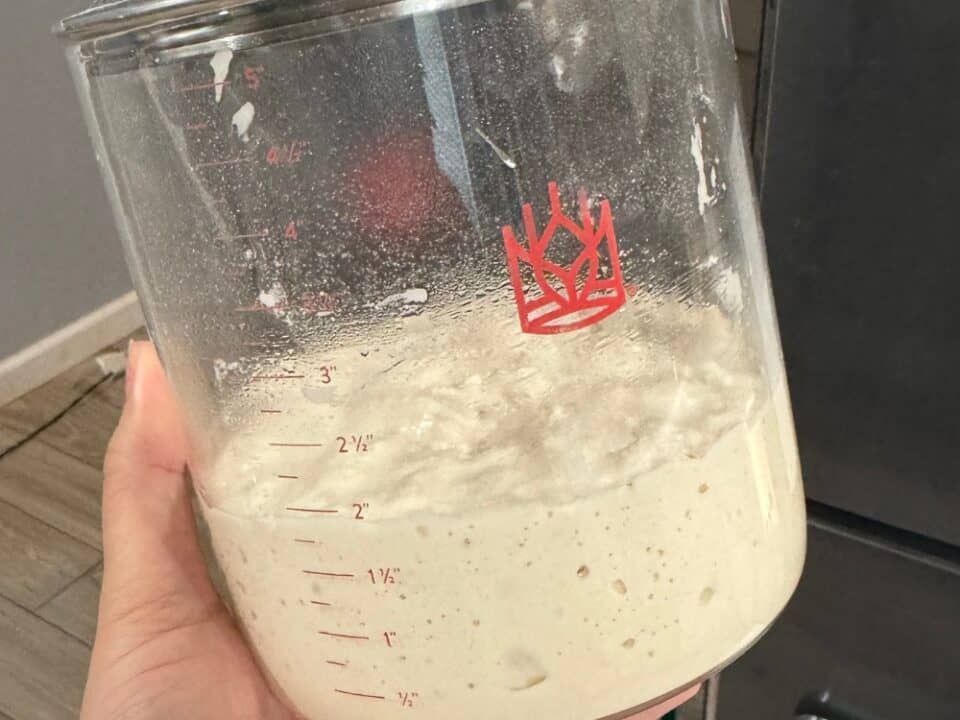Why Sourdough Starters Act Different in Summer Versus Winter
If you have ever wondered why your sourdough starter seems like a completely different creature in July than it does in January, you are not alone. At Pauline Manor, my kitchen swings from hot and humid in summer to downright chilly in winter, and “Lola,” my starter, reacts to every single change. Understanding how temperature and environment affect your starter will help you keep it strong no matter the season.

Temperature Drives Fermentation
Sourdough is a living culture of wild yeast and lactic acid bacteria. These microorganisms thrive within a certain temperature range, and their activity speeds up or slows down depending on the heat around them.
Warm summer air encourages the yeast to multiply quickly, which makes your starter rise and fall in record time. Cold winter air slows everything down, so the same feeding schedule that worked in July can leave you with a sleepy, sluggish starter in January.
The sweet spot for most starters is around 75 to 80 degrees Fahrenheit. When the kitchen creeps much higher than that, the yeast ferments so fast that it can burn through its food supply before you are ready to bake. In cooler weather, the opposite happens, and you may wait hours for bubbles to appear.
How Humidity and Drafts Play a Role
Temperature is not the only factor. Humidity in summer can make flour absorb moisture differently and can even add a bit of extra water to your starter, which changes the consistency. On the flip side, dry winter air can pull moisture out and leave your starter thicker than usual. Drafts from open windows, old doors, or an energy hungry HVAC system also cause small temperature swings that keep the microbes guessing.
Adjusting Your Feeding Routine
The trick is to match your care to the season. In summer, you might need to feed more often or move the jar to a slightly cooler spot to keep the yeast from racing ahead. In winter, you can use warmer water for feedings or place the jar in a cozy area, like on top of the refrigerator or near a gently warm oven light to maintain steady activity.
If you keep the starter in the fridge, remember that it will take longer to wake up when your kitchen is cold, so give it extra time for a couple of room-temperature feedings before baking.
Hydration and Flour Choice
Because flour absorbs water differently in varying humidity, you may notice that your sourdough starter feels looser in summer and stiffer in winter, even when you measure carefully. A simple fix is to adjust the water slightly. Add a teaspoon or two more water during dry spells or hold back a splash when it is muggy.
Whole grain flours also ferment a little faster because they have more nutrients, so if you switch flours seasonally, you may need to tweak feeding times.
Signs Your Starter Needs a Seasonal Shift
Watch for clues. In summer, a starter that peaks and collapses quickly or develops a layer of liquid early is telling you it is burning through food. Feed smaller amounts more often or move it to a cooler corner of the house. In winter, a starter that takes forever to double or smells flat and floury likely needs a warmer spot or a bit more patience between feedings.
Making Peace with Seasonal Rhythms
Part of the beauty of sourdough is that it responds to the natural world. Rather than fight every change, you can work with it. Expect your bread dough to proof faster in July and slower in January. Plan your bake days with the weather in mind and remember that no two seasons will be exactly the same.
I used to think my inconsistent kitchen at Pauline Manor was a problem, but it has actually made me a better baker. The starter teaches me to watch, smell, and listen instead of relying only on a clock.
Final Thoughts
A sourdough starter is a living community, and living things respond to their surroundings. By noticing how temperature, humidity, and flour type shift with the seasons, you can keep your starter thriving all year long.
Summer may bring wild bubbles and speedy rises, while winter calls for cozy corners and a little extra time. Embrace the changes, and you will find that every loaf carries the flavor of the season along with your own care.



